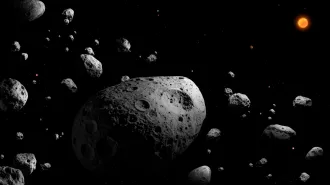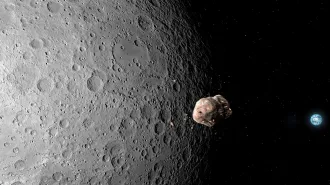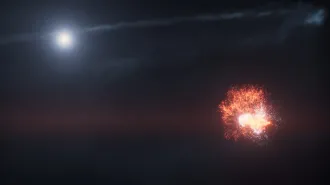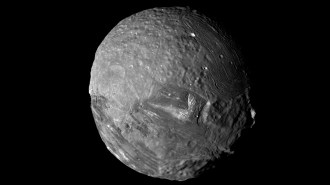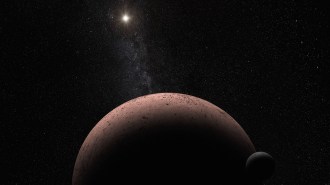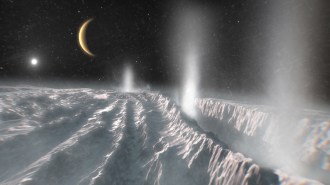A Mars rock analysis tool proved its mettle on a chance find from Arizona
One researcher's find resembles a Martian sample whose spots could be a sign of ancient life
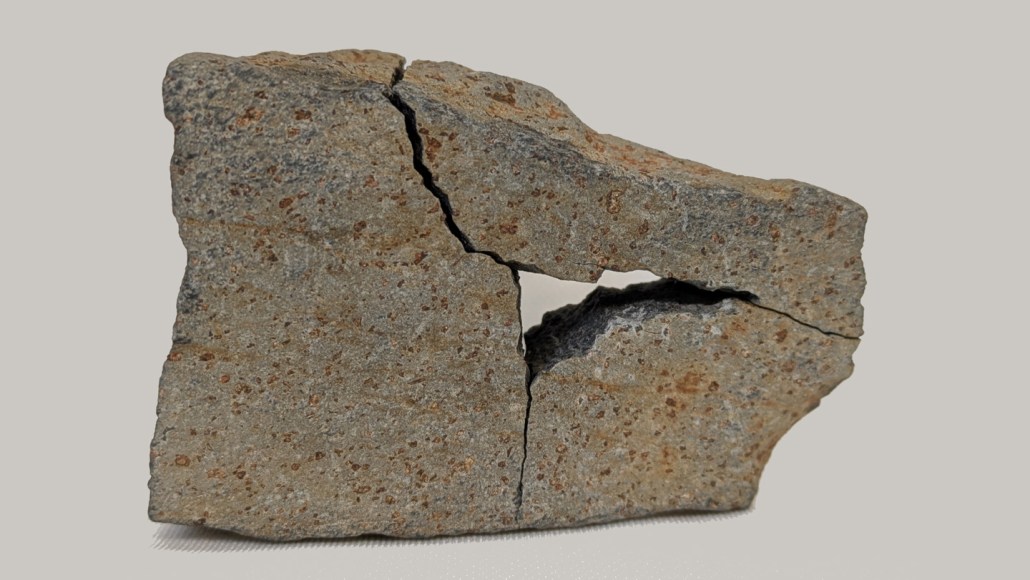
Materials scientist Nicholas Heinz picked up this piece of weathered basalt with rust-colored specks on a hike in Arizona. It ended up resembling an intriguing rock on Mars and serving as a stand-in to test a new technique for studying Martian samples.
Nicholas Heinz
Vibrant red sandstone surrounded Nicholas Heinz as he hiked in Sedona, Ariz., in January 2024. But an odd rock, smaller than the palm of his hand, caught his eye. The gray basalt peppered with rust-colored dots clearly didn’t belong.
“The rock itself is not particularly unique,” says Heinz, a materials scientist at NASA’s Jet Propulsion Laboratory in Pasadena, Calif. “I picked it up that day because it was very out of place for the region.” The rock could’ve come from a nearby ancient volcano and been dropped by a fellow hiker, he says.
Heinz admired the tiny specks trapped in the weathered basalt, so he stuck the stone in his backpack to take home. Six months later, he learned that this rock could serve as the perfect stand-in for an intriguing one found on Mars — one that possibly hints at ancient life.
Researchers announced in July 2024 that NASA’s Perseverance rover encountered a reddish rock sprinkled with dark flecks dubbed “poppy seeds” and millimeter-sized off-white splotches ringed in black called “leopard spots.” Instruments aboard the rover revealed the Martian rock — named Cheyava Falls, after a Grand Canyon waterfall — contains organic compounds, carbon-based compounds that are building blocks of life. Additionally, the leopard spots’ black rims, which have iron phosphate, resemble the chemistry and texture of features on earthly rocks associated with microbes.

Perseverance bagged a sample of the peculiar rock for some future mission to pick up and bring to Earth, although it and pieces of other sampled Martian rocks won’t arrive for at least another decade.
Meanwhile, Heinz had been testing a new rock characterization technique called optical photothermal infrared spectroscopy, or O-PTIR, and planned to try it on the basalt he had picked up. He realized this terrestrial rock contained bits of trapped material similarly sized and spaced as those on Cheyava Falls.
“When all these things sort of lined up, I said, ‘Well, this is a really great example of what the technique can do for this very specific Mars sample upon its return to Earth,’” he says. Heinz and colleagues published their test of O-PTIR with the terrestrial rock in the August Review of Scientific Instruments.
O-PTIR uses two lasers to reveal a rock’s composition. One laser’s infrared light heats up an area roughly 15 micrometers wide on the sample, causing the molecules to vibrate. Shining a visible light laser there can uncover details about the materials based on how the light scatters when bouncing off the molecules.
It’s “like a mirage on a hot day, where you see the air just above the road that starts bending light and makes things look kind of wavy,” Heinz says. “That change in the visible light gives you all the chemical information that traditional infrared techniques give.”
Traditional techniques lack the fine-scale spatial resolution of O-PTIR, which is important because of the low concentration of organic compounds expected in alien rocks, Heinz says.

He and his colleagues tested O-PTIR on three locations within a rust-colored inclusion on the terrestrial rock and one location on the rock’s main gray body. It showed the inclusion probably contains olivine minerals with iron and magnesium. In the gray part of the rock, O-PTIR detected a protein-rich organic material with different types of stretched chemical bonds.
If applied to the Cheyava Falls sample, such information about chemical bonds could add to Perseverance’s analysis, revealing more about the rock’s minerals, organics and their histories, says geobiologist Mike Tice of Texas A&M University in College Station, who was not involved in the new study. That could help uncover whether the leopard spots are truly a sign of life.
The researchers demonstrated O-PTIR’s fine-scale spatial resolution, but testing more samples or rock types could’ve strengthened the work, says planetary geologist Brian Hynek of the University of Colorado Boulder, who was also not involved. For instance, some sandstone rocks in Utah have iron-containing features resembling Cheyava Falls’s leopard spots. The Utah rocks’ iron originally precipitated from water seeping into the porous sandstone millions of years ago.
Still, Hynek says, O-PTIR adds to the suite of tools to study rocks that may contain organics of biological origin. “It opens up a whole new world of analyses.”
